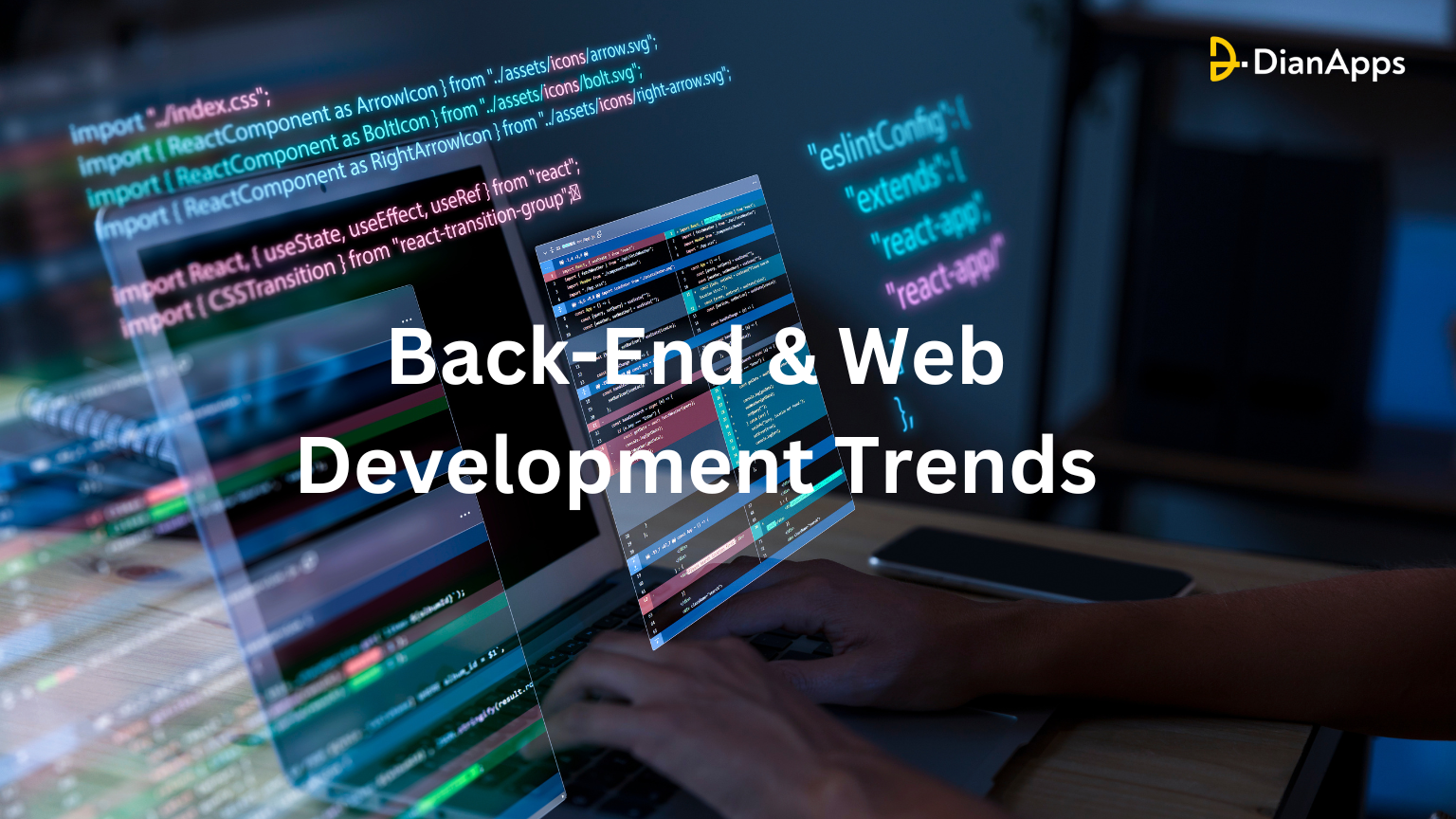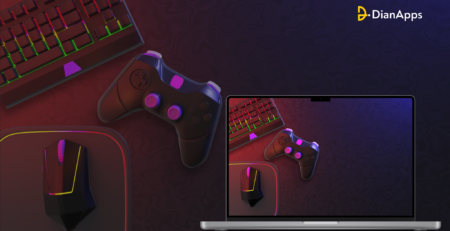Back-End & Web Development Trends For 2024
When you look around for web development service providers who prioritize innovation, you might often feel like a challenging race. Since, developers already face the constant pressure to deliver cutting-edge products, stay competitive, and meet evolving user expectations.
All this may seem overwhelming, but what if there were a compass to guide you through this complex field? What if insightful information existed that could not only resolve your challenges but also spark inspiration?
Fortunately, this article is your guide, which will provide you with the key trends set to define the year 2024 in back-end and web app development. Whether you’re a seasoned website developer aiming for excellence or a product owner eager to drive innovation, consider this your roadmap to success.
Overview of Web Development Trends
In today’s scenario of website development, we’re using the best methods and tools to create websites and software. These trends come about because of what users want and the cool new things happening in the tech world.
Here’s what’s big right now:
- Adaptive Design:
This means websites can easily adjust to fit any screen—whether it’s on your computer, tablet, or phone.
- Accessibility and Functionality:
As more people use smartphones, developers are making sure websites and apps are easy to use and still work well.
- Modern Frameworks and Libraries:
Web app developers love using these tools because they help make software work better. They’re like a set of building blocks for creating interactive websites and web apps.
- Optimizing Speed and Performance:
People don’t like waiting for a website to load. So, developers are working hard to make pages load faster. They use tricks like caching (saving bits of a website to load quicker) and reducing unnecessary code.
Making websites that work on any device, are easy to use, and load fast is the name of the game when it comes to frontend and backend web development services.
Web and Backend development trends to watch out for in 2024:
1. Ergonomic keyboards
Ergonomic keyboards, although not directly tied to back-end or web development trends, are increasingly capturing the attention of many website development companies. Given the prolonged hours spent typing and coding, the risk of discomfort and health issues looms large.
Ergonomic keyboards are purposefully crafted to prioritize user comfort and well-being. By offering a more comfortable typing experience and minimizing discomfort, these keyboards contribute to heightened productivity.
Developers can experience reduced downtime resulting from discomfort-related breaks, emphasizing the role of ergonomic keyboards in fostering a healthier and more efficient working environment.
2. Serverless architecture
Serverless architecture, also known as Function as a Service (FaaS), is a prominent trend in web app development that will continue to gain traction in 2024. This approach revolutionizes how developers handle servers, eliminating the need for server management. With a focus on code writing and deploying functions, serverless architecture enhances scalability and cost-effectiveness.
Operational on cloud-based servers, the serverless model frees developers from concerns about server availability, capacity, and infrastructure management. Major cloud service providers like AWS, Microsoft Azure Functions, and Google Cloud Functions offer these services. Notably cost-efficient, the pricing is typically based on actual resource utilization.
This back-end web development trend finds versatile applications across various businesses, including image identification, multimedia processing, notification engines, IoT apps, chatbots and assistants, and data collection.
3. Internet of things
The Internet of Things (IoT) is a buzzing custom software development trend, forming an interconnected network of devices sharing data over the Internet. From sensors to industrial machinery, IoT encompasses a wide range of devices, including smart home features and robotics.
With approximately 15.14 billion connected IoT devices, these gadgets generate substantial data on device statuses and user interactions. To harness this data efficiently, developers can create systems in web or mobile apps for ingestion, processing, and storage.
This trend synergizes seamlessly with cloud computing, often utilizing platforms like AWS, Azure, or Google Cloud for building scalable and reliable back-end systems for IoT applications.
4. Zero trust architecture
Zero-trust cybersecurity is a modern approach challenging traditional security models. It rejects automatic trust, verifying every user and device, regardless of their location.
Key principles include:
- identity verification through methods like multi-factor authentication,
- granting least privilege access to minimize risks,
- micro-segmentation for granular network isolation,
- data encryption in transit and at rest, and a fundamental principle of never trusting implicitly—always requiring verification at every access stage.
This trend aims to fortify security by assuming potential threats from both internal and external origins.
5. Metaverse Integration
The upcoming website development trend for 2024 revolves around the integration of meta-universes, allowing users to engage with each other and digital assets seamlessly across real and virtual worlds. Businesses stand to gain various advantages by incorporating meta-villages into their websites or apps, including:
- Increased brand awareness
- New revenue streams
- Fostering innovation
- Gaining insights into customer behaviour and preferences.
Businesses can tap into the benefits of metaverses without necessarily creating an entire virtual world. Simple integration of metaverse elements in web design and development, such as incorporating virtual reality into custom e-commerce development platforms, can enhance the shopping experience. This enables customers to interact with products virtually before making a purchase.
In diverse fields like medicine, gaming, training, and real estate, meta-universes offer innovative possibilities, from creating virtual healthcare modules to immersive gaming experiences.
Here’s a must-read: The Complete Guide on How to Build a Metaverse.
6. AL&ML integration
In the upcoming surge of technological advancement, the integration of Artificial Intelligence (AI) and Machine Learning (ML) into back-end systems is poised for substantial growth.
Web app developers from almost every website development company will leverage AI-powered tools for automating tasks, refining user experiences, and analyzing vast data sets more efficiently. This integration brings forth personalized user interactions, predictive analytics, and heightened decision-making capabilities in web applications.
Notable applications include AI-driven code generation tools like OpenAI’s ChatGPT, enhancing security and code quality through platforms like DeepCode, and leveraging AI for customization, predictive analytics, recommendation systems, and virtual assistants to elevate user engagement and streamline customer support.
7. Edge computing
Edge computing is a revolutionary paradigm that decentralizes data processing, bringing it closer to the point of generation or use. By reducing data travel distance, it significantly lowers latency, ensuring quicker responses for real-time applications like video streaming and IoT interactions.
In 2024, web applications benefit from enhanced performance through strategies like Content Delivery Networks (CDNs) that leverage edge computing.
Bandwidth is optimized as data processing occurs closer to the source, leading to substantial savings.
Real-time data processing at edge nodes is particularly valuable for applications requiring immediate analysis, like IoT sensors triggering swift actions.
The reliability of systems is also improved with distributed computing across multiple edge nodes, minimizing downtime risks. Edge computing’s adoption is transforming data handling, optimizing bandwidth, and revolutionizing application performance across diverse industries.
8. Blockchain and Web 3.0
Blockchain development technology, initially associated with cryptocurrency like Bitcoin, has evolved beyond its origins and found applications in diverse sectors such as logistics, finance, healthcare, and real estate. Its key features include decentralization, eliminating the need for central authorities, ensuring transparency, and enhancing security through cryptographic algorithms that safeguard transactions from tampering.
In the context of Web3, blockchain serves as the foundational technology, enabling the creation of secure networks without central control. The decentralized nature of blockchain makes it resistant to hacking and ensures the integrity of information.
Web3 technologies are already manifesting in products like the Brave Browser, leveraging blockchain for digital advertising and cryptocurrency rewards. Platforms like OpenSea provide a decentralized marketplace for non-fungible tokens (NFTs), while Microsoft Entra Verified ID offers decentralized authentication and identity verification.
Blockchain-based web development is revolutionizing industries, enhancing reliability, security, and efficiency while reducing risks and costs.
9. Motion UI
Motion UI in front-end development incorporates animations, transitions, and dynamic visual effects to engage users and enhance a website’s appeal and usability. Key components include animated movements of elements, scrolling effects that add depth and interactivity, and feedback responses to user interactions, such as subtle bouncing notifications.
Implementation involves using HTML, CSS, and JavaScript. CSS preprocessor is utilized for creating animations, while developers leverage libraries and JavaScript frameworks like the GreenSock Animation Platform or Three.js for more interactive effects. This trend not only adds a visually appealing touch to web interfaces but also contributes to a more immersive and interactive user experience.
Conclusion
In conclusion, the year 2024 is set to see a continuous surge in the demand for website development, with a primary focus on enhancing user experiences. Crafting a seamless interface across devices remains a top priority for businesses.
The anticipated integration of meta-universe solutions and AI-driven chatbots is poised to raise performance standards. These highlighted trends not only hold significance for the upcoming year but also have the potential to shape the field of web design and development for the next 5–10 years.
These impactful trends could become benchmarks for the future of web software, offering strategic responses to competition, expanding customer bases, reducing costs, and unlocking a new spectrum of monetization opportunities for the industry.
Moreover, as an experienced the best website development company, DianApps stands ready to integrate these trends into your project, ensuring potential benefits.




